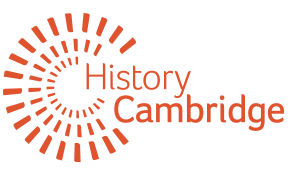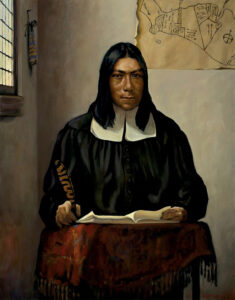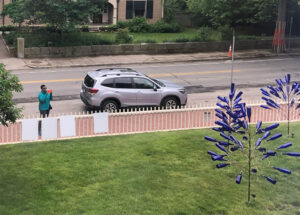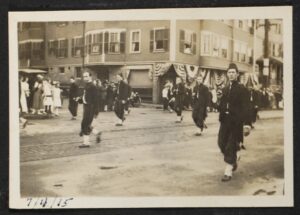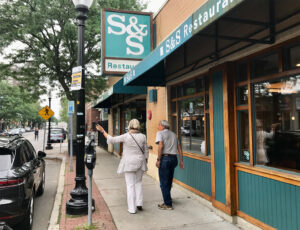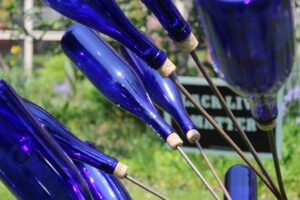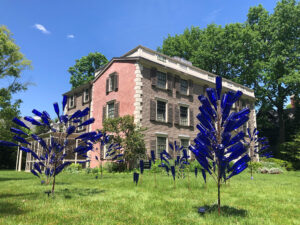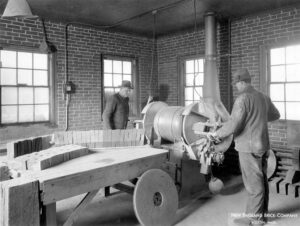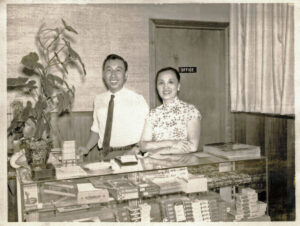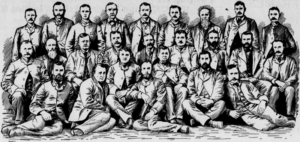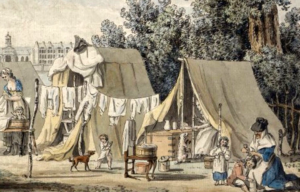Indigenous scholars put up with missionaries, Harvard’s Indian College and ‘praying towns’
The history of Indigenous people in the place we call Cambridge is vastly untold and underrepresented, yet important to understand to comprehend the roots and depth of the cultural genocide that Native Americans faced over centuries within Massachusetts and the United States as a whole. Indigenous scholars, who were instructed under Colonial education systems, have similarly received very little recognition despite their impact. They disrupted the colonists’ “conviction of Colonial dominance” over the Native people. They used their learned and observed skills and the Colonialist teachings thrust upon them to their advantage to benefit themselves and their communities. James Printer and John Sassamon are among the many examples of Indigenous people – often apprenticed to Christian missionaries – who used assimilation to their advantage to reclaim their humanity and rights.
Read MoreHistory Cambridge plans a celebration Saturday for its ‘Forgotten Souls of Tory Row’ installation
History Cambridge put out a call in February to artists to create a temporary installation on the lawn of our headquarters, the Hooper-Lee-Nichols House, 159 Brattle St., West Cambridge. With support from Cambridge Arts and the Mass Cultural Council, this project’s goal was to honor the enslaved people who lived and worked on Brattle Street. Many of the area’s wealthy homeowners made their wealth through enslaved labor in Jamaica and enslaved people at their homes and estates in Cambridge. Joseph and Rebecca Lee, owners of the Hooper-Lee-Nichols House, were complicit in this economy. We know of at least five individuals – Cesar, Prince, Caesar, Mark Lee (or Lewis) and a woman whose name we do not know – who were enslaved by the owners of the house. Although we have no direct surviving evidence that an enslaved person ever lived there, we know other white Tory Row families enslaved people at their Brattle Street mansions. History Cambridge strives to use its headquarters in a way that recovers and shares the stories of the enslaved people of this land and acknowledges that chattel slavery was a Northern as well as a Southern system.
Read MoreA century ago, the Fourth of July was a chance to meld old and new traditions
In the early 20th century, the Fourth of July offered concerts, lectures, parades and sporting events to residents of Cambridge and many cities around the country. Whether celebrating in their own neighborhoods with luncheons hosted by local civic or religious groups, playing in or watching a pickup baseball game or track race, or watching the fireworks from the banks of the Charles, Cantabrigians had plenty of options for marking the nation’s birthday. But during the decade between 1910 and 1920, events around the world and across the nation made their way into the city’s Independence Day celebrations, demonstrating how the meaning of the holiday had grown and changed. The holiday is still evolving a century later.
Read MoreS&S Restaurant is still serving up the comfort after more than a century in Inman Square
by Deb Mandel, 2022 In the decade preceding Cambridge Electric Light’s illumination of Cambridge Street, when trolley tracks ran from Inman to Porter Square, a little delicatessen began welcoming hungry patrons. From its opening in November 1919, Rebecca “Ma” Edelstein greeted guests with “es and es,” Yiddish for “eat and eat” – the phrase that lent the…
Read MoreCambridge’s Caribbean connection runs deep
“Forgotten Souls of Tory Row: Remembering the Enslaved People of Brattle Street,” the installation of bottle trees now on view at the History Cambridge headquarters (159 Brattle St.), was inspired by a custom that originated in Congo in West Africa long ago. The tradition of bottle trees was brought to the Caribbean and the Southern United States by enslaved people and passed down through generations. While bottle trees signify different things to different people, there is agreement that the bottles are placed on tree branches to destroy evil spirits and to capture the energy, spirit and memories of ancestors.
Read More‘Forgotten Souls of Tory Row’ art installation remembers enslaved people of Brattle Street
Cambridge and slavery are not often paired in the public imagination. Most think of the enslavement of people of African descent as a Southern phenomenon from which the North, particularly New England, was exempt. But slavery was a very real, ever-present institution in Northern colonies and, later, states – including Massachusetts. Recent efforts by academic and public historians to emphasize the role slavery played in the Cambridge area include the re-centering of Medford’s Royall House and Slave Quarters to focus on the experiences of enslaved people on that estate, as well as Harvard University’s recent release of the “Harvard and the Legacy of Slavery” report. History Cambridge has also been engaged in this important work through our research and public programs, including our Tory Row Antiracism Coalition
Read More‘Changing Tides in Cambridge Industry’ talk will examine wave of labor and immigration
Since its beginnings as a colonial settlement, Cambridge has seen numerous shifts in its population, as waves of migrants arrived from various parts of the United States and around the world. As these new Cantabrigians arrived in the city needing work, many found jobs in the city’s industrial sector, most notably in the glass, brick, furniture, meatpacking and confectionary factories in Cambridge. Employment in many of these industries was dominated by different immigrant groups at different periods, with newer arrivals taking jobs in lower-paying, more physically demanding sectors. Eventually these ethnic groups would move up the socioeconomic ladder, finding employment in more lucrative and less strenuous industries while the next wave of newcomers replaced them. For many, similar work experience at home and the recommendation of friends, family or others of their same ethnicity led them to choose a particular industry. For others, their status as immigrants drastically limited the employment options open to them. Whether by choice or circumscription, the clustering of migrant groups in particular industries helped shape the labor landscape of Cambridge.
Read MoreJoyce Chen started with a 250-seat restaurant, went to 350 and only grew her empire from there
I recently began working as a volunteer for History Cambridge, updating the 2011 Culinary Cambridge website written by Rain Robertson. Digging through the Cambridge Public Library’s Historic Cambridge Newspaper Collection has been a great opportunity to revisit some of my favorite restaurants. My best experience so far has been speaking with Stephen Chen, son of Joyce Chen, to review information and enrich the restaurant’s history with photographs and personal stories. In honor of May being Asian American, Native Hawaiian and Pacific Islander Heritage Month, we salute Joyce Chen, her restaurants and her family legacy.
Read MoreGilded Age Cambridge eyed the Haymarket Affair as misconduct from ‘those Bohemian anarchists’
How labor won over suspicion resulting from violence in Chicago
Read MoreUpcoming History Cafe will pose the question: Washington slept here, but who made his bed?
A talk on women, Black Cantabrigians and the work of revolution
Read More